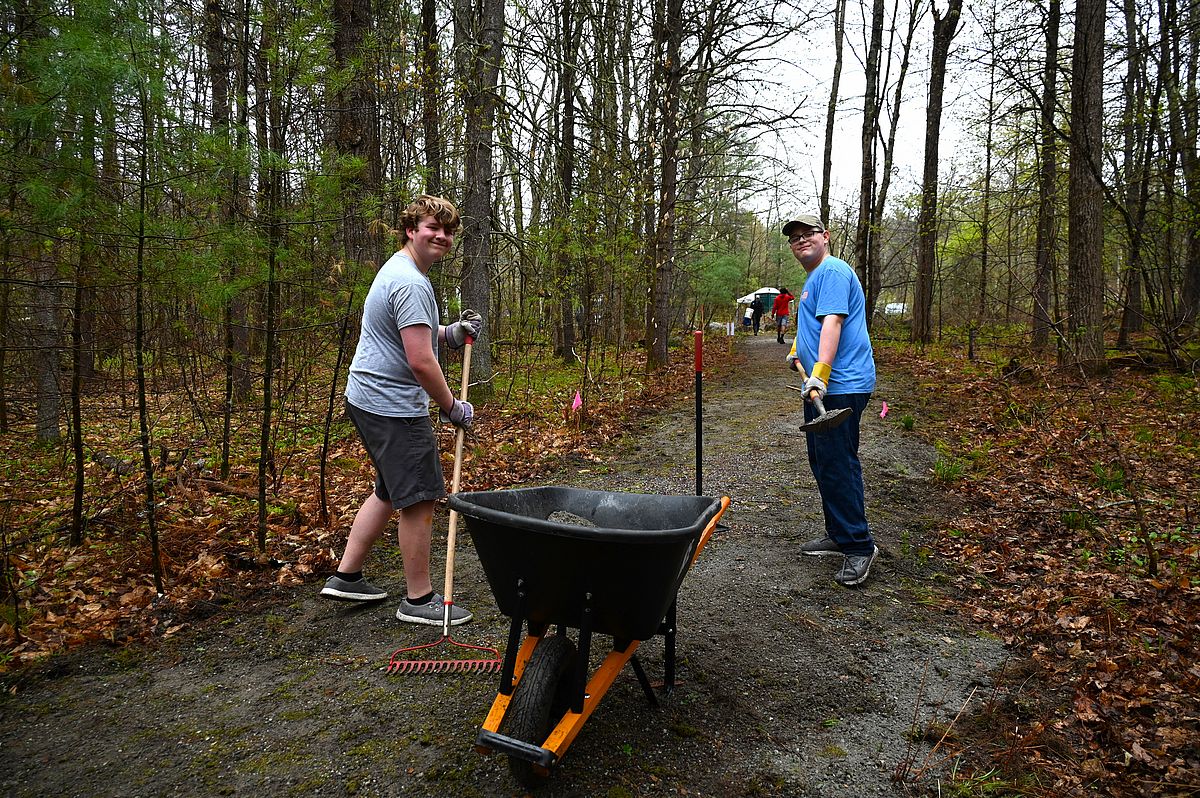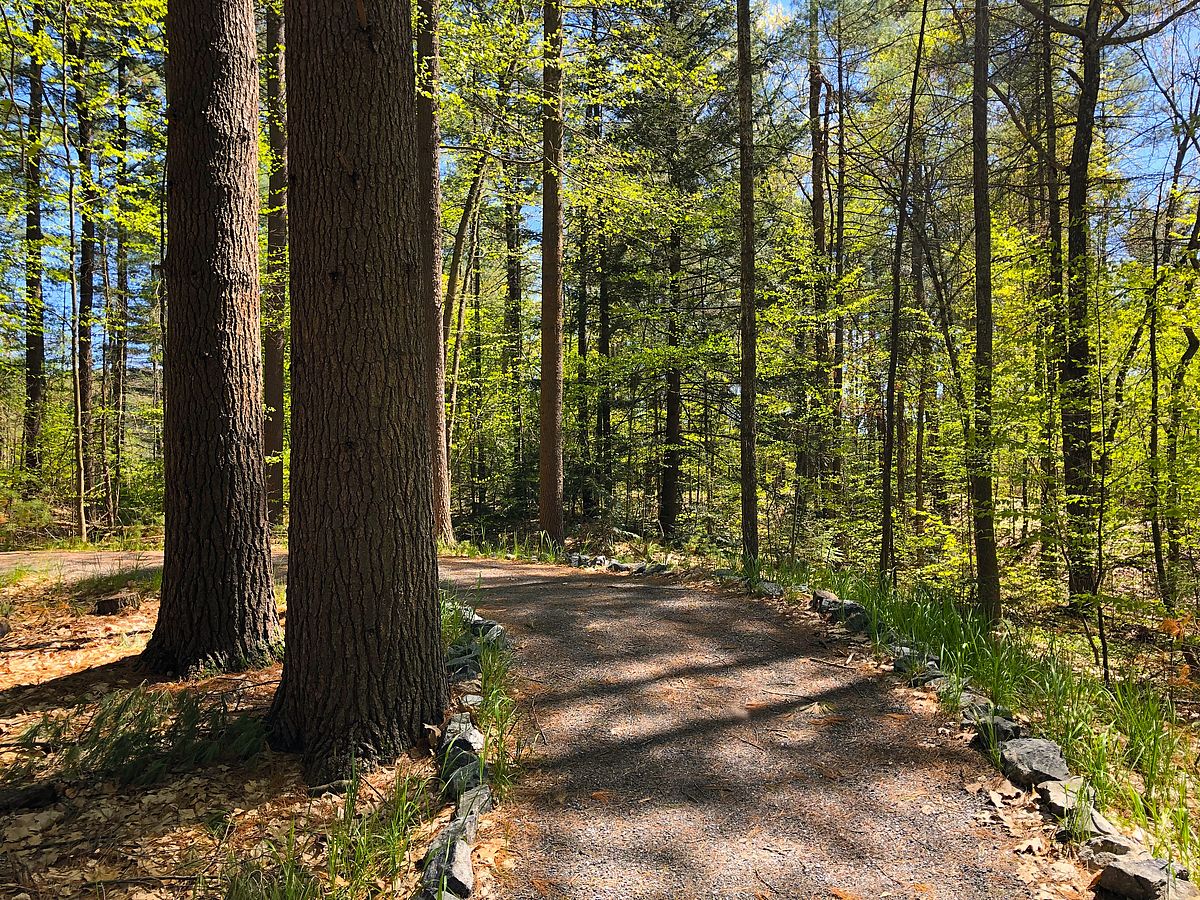On the Path to Greater Accessibility

Among the portfolio of beautiful properties that Mount Grace manages two stand out: Alderbrook Meadows Wildlife Sanctuary and Eagle Reserve. These conservation areas are loved not just for their beautiful forests and wetlands, but also because of their accessible trails.
What’s an accessible trail? In short, it’s a trail designed to be used by people of all abilities. So whether you’re a parent with young children, an older adult, or someone with mobility challenges, it’s a space where you can enjoy the outdoors comfortably. Unlike many typical Massachusetts hiking trails, accessible trails have stable, wide, and mostly flat surfaces. They’re also costly to build and require ongoing maintenance.
Still, they’re a vital part of Mount Grace’s mission to make the outdoors welcoming and accessible to everyone.
To help guide our work with accessible trails, Mount Grace partnered with two graduate students from the Yale School of the Environment, Cindy Cifuentes and Tori Ramirez. They conducted research and interviewed several prominent land trusts in the Eastern US and Upper Midwest to learn how they approach trail accessibility. Our collaboration with Yale resulted in a report and series of recommendations for Mount Grace to consider as we move forward with trail accessibility work.

One of the biggest insights was in how we talk about and promote accessibility. Yes, Mount Grace has accessible trails, but does that really mean they are accessible to everyone? What qualifies as an ‘easy’ trail vs. a ‘difficult’ trail? The best way to answer these questions is to provide meaningful information about our trail features and conditions and let users make their own informed decisions. To that end, Mount Grace is working to collect new, more quantitative and descriptive information about our trails that we can share with potential users.
And thanks to a grant from LifePath, we will also be making improvements to some of our signage at Alderbrook Meadows to improve visibility and readability so visitors can get the most out of their experience. We will also be installing age-friendly benches along the path, which will improve the utility of the benches for more people and provide a more inclusive space for visitors with mobility issues.
Accessibility remains a priority for Mount Grace and you will see this reflected in some of our future stewardship work on current and forthcoming Conservation Areas (stay tuned!). In the meantime, we also need to understand what are some of the barriers (social, economic, etc.) to accessing open space experienced by the different communities within our 23-town service area. We are working with a graduate student from the Columbia University APEx Program this summer to address this very question, and we look forward to sharing our results in a future newsletter. Until then, take some time to visit a Mount Grace Conservation Area this summer. Follow us on Facebook and Instagram for some great stories about what you can see on your next Mount Grace adventure!
If you’d like to stay in the loop about our trails and upcoming volunteer opportunities, don’t forget to sign up for our monthly newsletter!
